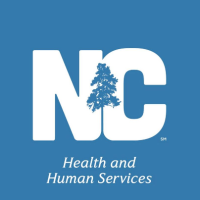By Rebecca Lunn
In the nonprofit arena, charitable solicitation licenses are a necessity for certain fundraising efforts. If you are an organization or individual that asks the public for contributions or donations to support a charitable purpose, a charitable solicitation license (“CSL”) is needed, unless specifically exempt by law. As many states have laws regulating the solicitation of funds for charitable purposes, it is important to check the requirements for each state your organization operates in to ensure compliance.
For organizations based in North Carolina whom are currently registered with the NC Secretary of State (SoS) Charities Bureau, keep in mind the following renewal requirements:
· The NC SoS notifies by mail all organizations who already hold licenses 65 days prior to their annual renewal date of the renewal requirements. Typically, each organization files its own CSL renewal directly with the NC SoS.
· The NC SoS has published on its website that all organizations who have a current CSL should disclose its licensure status, such as including a statement with the following wording on all solicitations: “Financial information about this organization and a copy of its license are available from the State Solicitation Licensing Branch at 919-807-2214 or 888-830-4989 for NC Residents.”
· Licenses are generally due 4 ½ months following the fiscal year-end date of the organization; however, all organizations in “current” standing with the NC SoS receive a 60-day extension without having to request it. For example, a calendar year organization in current standing has a CSL renewal due date of July 15th in reliance on the automatic 60-day extension. Absent current standing status, an organization will be subject to late filing penalties upon its eventual updating of its record with the NC SoS.
· If more time is needed to file the CSL renewal, an additional 30-day extension is available to the organization by filing a copy of the Federal Form 8868 (extension for IRS Form 990) prior to the expiration of the automatic 60-day extension. As a result, a calendar-year organization may, by timely-filed request, extend the period of time for CSL renewal to August 15th.
· When the CSL renewal is actually prepared, organizations must comply with the annual financial disclosure requirements via submission of one of the following: (1) a copy of the duly executed Form 990, (2) copy of the Audited Financial Statements, or (3) completing a NC SoS “Annual Financial Report” signed by 3 members of the organization’s board of directors, finance committee or audit committee.
If you are an organization who needs assistance or has additional questions on the Charitable Solicitation License requirements or renewal process, our accounting professionals at Langdon & Company would be glad to assist. Please contact us at 919-662-1001 for further information.
Also, for further information specific to the North Carolina filing requirements, please visit https://www.sosnc.gov/csl/ThePage.aspx.
Rebecca [email protected] is an Audit Senior who works primarily with non-profit organizations.
 How will the new tax law affect state income taxes? The Tax Cuts and Jobs Act, signed into law on Dec. 22, 2017, is a major revamping of federal taxes but it also could have sweeping effects on your state taxes. To name a few, most states use the federal system to calculate state taxable income, so you may see your state income tax liability change. New limits on the federal state and local tax deduction may indirectly impact individuals at the state level, especially in high tax areas. States will have to decide whether to conform with new federal tax rules.
How will the new tax law affect state income taxes? The Tax Cuts and Jobs Act, signed into law on Dec. 22, 2017, is a major revamping of federal taxes but it also could have sweeping effects on your state taxes. To name a few, most states use the federal system to calculate state taxable income, so you may see your state income tax liability change. New limits on the federal state and local tax deduction may indirectly impact individuals at the state level, especially in high tax areas. States will have to decide whether to conform with new federal tax rules.







 ses, it may be helpful to seek the aid of an accounting firm that can provide services such as accounts payable and receivable, billing, payroll, bank reconciliations, general ledger entries and monthly financial reports. You will gain the knowledge of an experienced bookkeeper with access to CPAs within the firm at a cost effective rate.
ses, it may be helpful to seek the aid of an accounting firm that can provide services such as accounts payable and receivable, billing, payroll, bank reconciliations, general ledger entries and monthly financial reports. You will gain the knowledge of an experienced bookkeeper with access to CPAs within the firm at a cost effective rate. ncial statements are free from material misstatement and includes the auditor obtaining an understanding of the client’s internal controls and assessing fraud risks. An audit is also the most costly level of attest service. While less costly, a Review is substantially narrower in scope than an audit and provides only limited assurance. A review consists mostly of inquiry and analytical procedures. If the audit or review services do not meet the needs of the organization, CPA firms also offer Agreed Upon Procedure (AUP) services. An AUP is an engagement in which an auditor is engaged to carry out procedures of an audit nature to which the auditor, the client, and any appropriate third party have agreed and to report on factual findings.
ncial statements are free from material misstatement and includes the auditor obtaining an understanding of the client’s internal controls and assessing fraud risks. An audit is also the most costly level of attest service. While less costly, a Review is substantially narrower in scope than an audit and provides only limited assurance. A review consists mostly of inquiry and analytical procedures. If the audit or review services do not meet the needs of the organization, CPA firms also offer Agreed Upon Procedure (AUP) services. An AUP is an engagement in which an auditor is engaged to carry out procedures of an audit nature to which the auditor, the client, and any appropriate third party have agreed and to report on factual findings.


 er ways a donor can make gifts in excess of the exemption without being subject to the filing requirement and liability on the excess, under
er ways a donor can make gifts in excess of the exemption without being subject to the filing requirement and liability on the excess, under 




 If your organization would like additional information about implementing or improving IT controls, please contact
If your organization would like additional information about implementing or improving IT controls, please contact